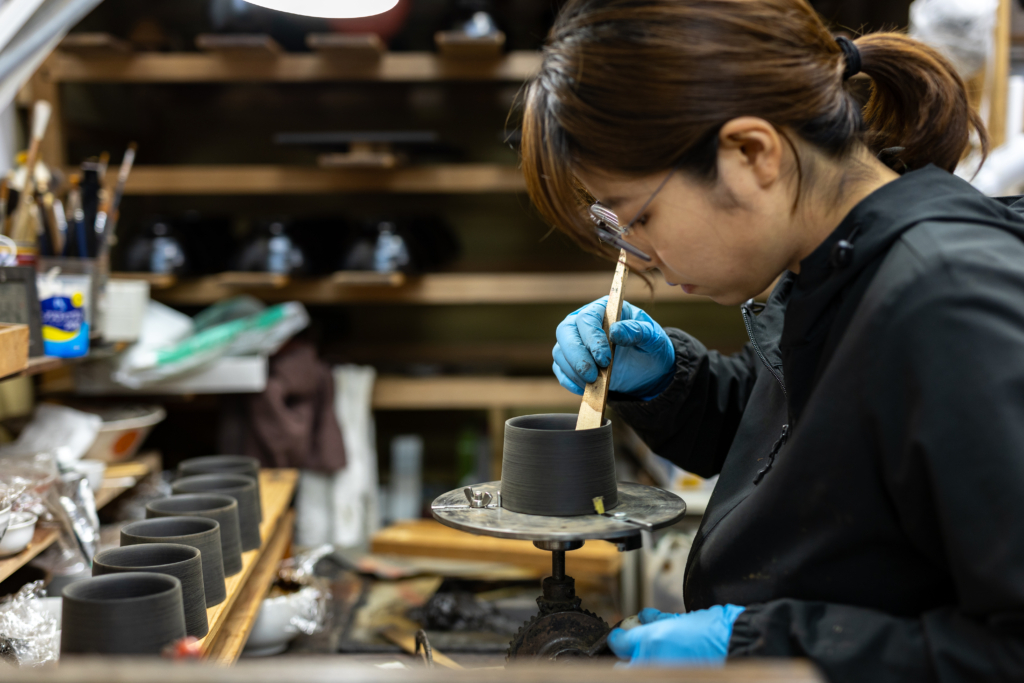
The Power of Tradition and Innovation in Wajima Lacquerware
The Future Painted by WAJIMA KIRIMOTO
“WAJIMA KIRIMOTO,” a workshop located in Wajima City, Ishikawa Prefecture, has been preserving the 200-year tradition of Wajima lacquerware while creating new value. Their works attract people both in Japan and abroad, with a warm desire to “enhance people’s lives through the power of lacquerware.” Led by designer Taiichi Kirimoto and supported by Junko Kirimoto, the workshop continues to take on new challenges, having overcome trials such as earthquakes and floods.
Wajima City, located in the northern part of the Noto Peninsula in Ishikawa Prefecture, is about two and a half hours by car from Kanazawa Station. With a population of around 25,000, the city is a place where rich nature and culture harmonize, facing the Sea of Japan.
The traditional craft of Wajima lacquerware, which developed from the Edo period, is well-known as one of Japan’s representative industries. Fishing and tourism also support the local economy. The region boasts stunning landscapes, including majestic coastlines shaped by the rough waves of the Sea of Japan and terraced rice fields that stretch in a stair-step formation. However, the city also faces challenges such as a declining birthrate, an aging population, and population decrease. As a result, the preservation of Wajima lacquerware and the promotion of tourism utilizing local resources have become important themes.
Background of History and Transformation
Wajima lacquerware is a traditional craft with over 200 years of history and is a representative industry of Wajima City. Among them, “WAJIMA KIRIMOTO” is a workshop that pioneered a unique path of integrated production in an industry that traditionally relies on a division of labor.
“Wajima lacquerware is based on a division of labor, where the woodworkers’ job is to shape the materials according to the orders. However, Taiichi Kirimoto, the representative, wanted to propose his own designs. By creating new shapes that suited the times, he aimed to expand the possibilities of Wajima lacquerware,” she explains.
This transformation coincided with the industry’s struggles after the collapse of the bubble economy. The demand for Wajima lacquerware sharply declined, and production fell to one-fifth of its peak.
“I believe that without attempting integrated production, it would have been difficult to survive. In the end, this became the way to sustain the workshop,” she reflects.
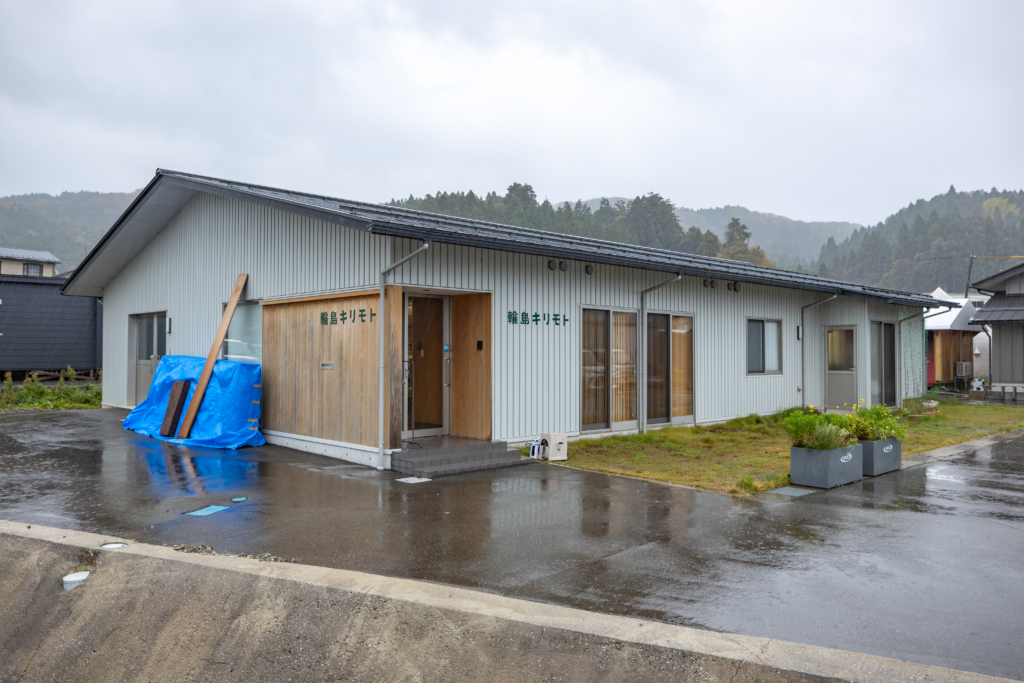
Challenges Brought by Natural Disasters
The earthquake and flood in 2023 were significant trials for WAJIMA KIRIMOTO. While the workshop miraculously escaped damage, their home was completely destroyed, and their daily life was severely affected.
“We were truly fortunate that the workshop remained intact. From the outside, it might look normal, but our home was completely destroyed, so I’m currently living in the workshop. There is no bath, and the water supply is unstable,” she explains, conveying the severe hardships that are not immediately visible on the surface.
“The craft association’s staff were all affected, so we were unable to take action. However, I feel that in order for the entire Wajima lacquerware region to survive, we must leverage our community connections and explore new forms of collaboration.” Despite these difficult circumstances, Junko remains focused on the recovery of the entire community.
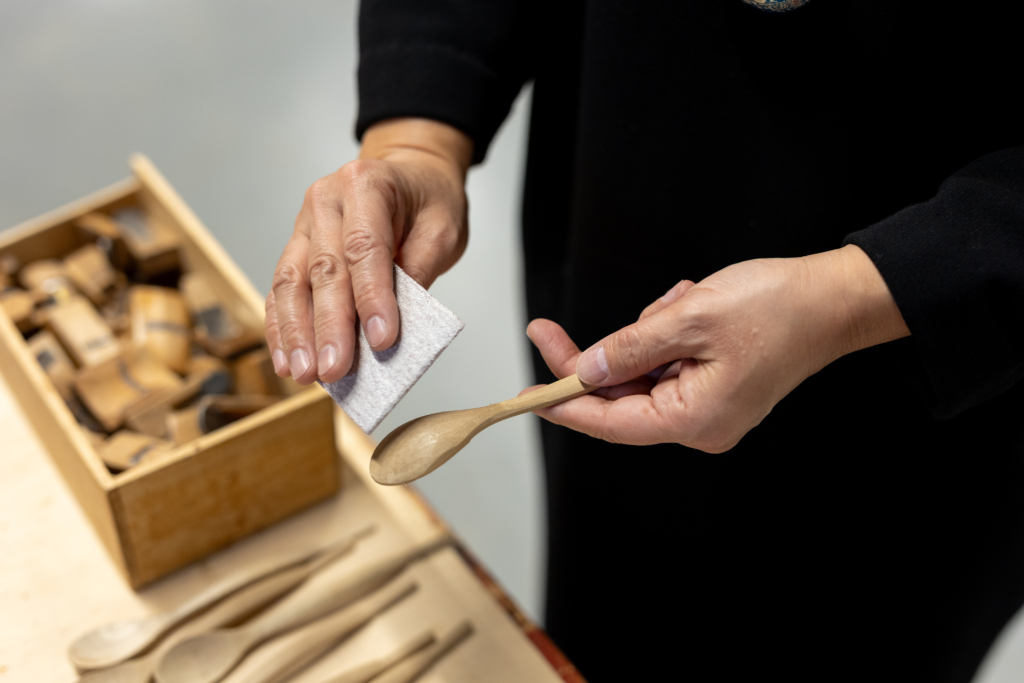
Crafting for “Comfortable Living”
WAJIMA KIRIMOTO’s products are built on a philosophy that values “ensuring the comfort of those who use them.”
“The representative values standing at the store and directly listening to customers’ feedback. When we heard complaints like ‘I can’t use the metal spoons’ or ‘I want a design that can be used every day,’ we developed our own unique techniques. As a result, we were able to create lacquerware that could accommodate spoons and forks,” explains Junko.
WAJIMA KIRIMOTO’s products have evolved by carefully considering and responding to the voices of their users. While preserving tradition, they are dedicated to creating designs that harmonize with modern lifestyles, a commitment that attracts many people.
“The moisture level of lacquer is similar to that of human skin, and it feels as comfortable as a handshake when you touch it. I truly believe that the sensation of holding a piece enhances daily life.”
The unique texture and functionality of lacquerware are not only appreciated for their utility but also for the comfort they provide.
Additionally, Junko shares how lacquerware was helpful during disasters:
“After the earthquake, when we had no access to water, we were able to rely on lacquerware. Its high antibacterial properties prevent food from spoiling, so I was reminded once again of how reassuring this material is in such situations.”
Global Response and the Expanding Potential of Wajima Lacquerware
WAJIMA KIRIMOTO’s products are highly regarded internationally. Many foreign customers are drawn to their charm after physically handling and using the products in person.
“International customers have a deep respect for Japanese traditional crafts. Many are amazed by the materials used in our lacquerware, which they have never seen before. They are especially fascinated by how the vessels don’t become hot even when filled with something hot, and the pleasant tactile sensation,” says Junko.
While some customers purchase online, many prefer to visit the workshop in person to see and buy the products. Junko is impressed by how international customers take the time to understand the value embedded in lacquerware.
“Regarding the price, once we explain the background of why the cost is what it is, they understand. Many people are genuinely interested in the value of Japanese crafts.”
Before the pandemic, the number of international tourists visiting the workshop increased, but the situation has since changed. Nevertheless, Junko remains confident about the potential for overseas expansion.
“We’re gradually preparing to provide explanations and support in English. It may be difficult this year, but eventually, we want to put more effort into overseas sales and promotions.”
WAJIMA KIRIMOTO’s products captivate people both in Japan and abroad, thanks to the appeal of lacquerware itself and the traditional craftsmanship that supports it. Attention is now focused on their future developments.
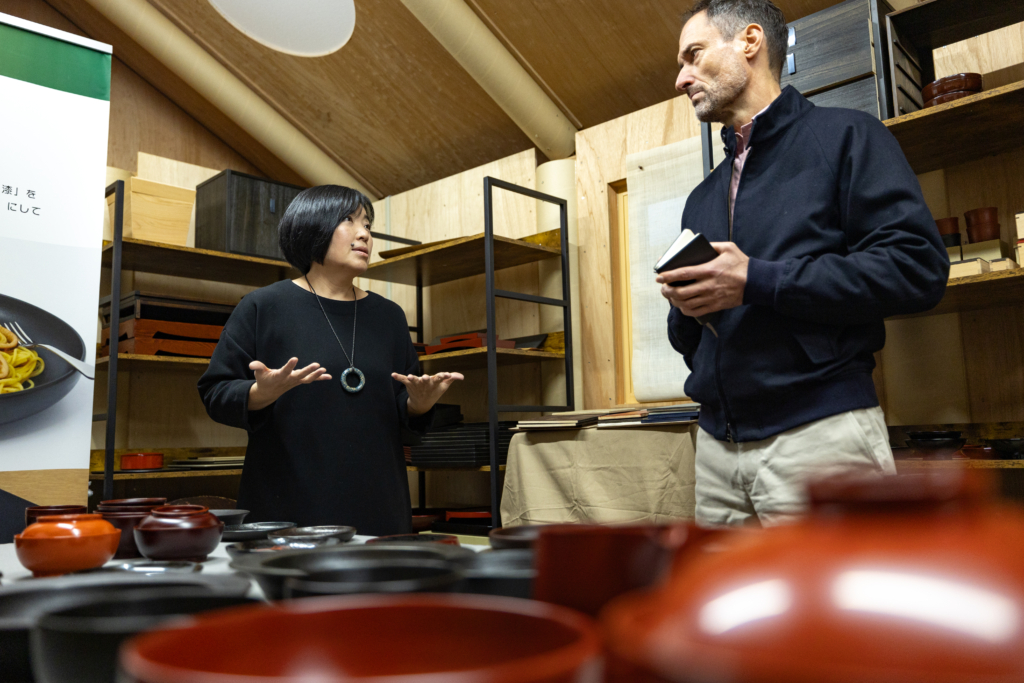
The Connections Created by Lacquerware
WAJIMA KIRIMOTO’s products go beyond their role as mere utensils; they have a profound impact on the lives and hearts of those who use them. Junko shared several memorable stories about the connections that have been formed through lacquerware.
“One story is about an elderly man who had lost his appetite and was barely eating. However, when he saw one of our spoons, he said, ‘I want to use this spoon, so please make me some porridge.’ After that, he was able to eat a little more each day.”
Another story is equally striking. “There was someone who couldn’t eat hospital food, but they were able to eat it after transferring the food into one of our dishes. It was the same food, but just changing the dish made them want to eat. It was truly surprising.”
This person later regained strength thanks to the meals eaten from lacquerware and was able to undergo surgery. After the successful operation, they reported, “I’m now healthy enough to enjoy traveling with my mother.”
“The power of lacquerware isn’t just about enriching people’s lives—it can also save lives. When I hear these kinds of stories, I feel truly grateful that I’ve continued in this work,” Junko reflects, reaffirming the significance of craftsmanship.
Successor Issues and Future Outlook
Kohei, the son who will lead the next generation of WAJIMA KIRIMOTO, is currently working independently to hone his skills as a craftsman. Originally responsible for sales, he began his journey as a craftsman after the COVID-19 pandemic. Junko explains the background of this decision:
“When sales work almost disappeared due to the pandemic, my son felt a sense of urgency about the shortage of craftsmen. He realized that while selling can be outsourced, nothing can begin without someone making the products. He decided to learn the skills himself. So, he became independent and is now working as a solo artist.”
However, Junko believes that having a successor alone does not guarantee success in these challenging times.
“Just having a successor doesn’t solve the fundamental problems the industry faces. If the Wajima lacquerware industry doesn’t survive, it’s meaningless. The challenge is how to create a structure that supports the entire region. My son and I continue to explore solutions together,” she says.
The importance of activities that consider the future of the entire industry has been heightened by the impact of the earthquake. Many Wajima lacquerware workshops were damaged, and they now face a difficult situation in continuing their businesses. Junko feels that the entire community must collaborate to find a way forward toward recovery.
“Wajima lacquerware has the potential to be recognized by many more people as an everyday tool. To share its appeal with younger generations and overseas audiences, it’s essential to promote the beauty of the region to the world,” she says.
She believes strengthening connections with the younger generation of the local community and new tourists is also important.
Although it is currently difficult to implement experience programs, there are plans in the works for small-scale experiences with lacquerware meals or cooking workshops. Junko hopes these activities will contribute to tourism promotion and regional revitalization.
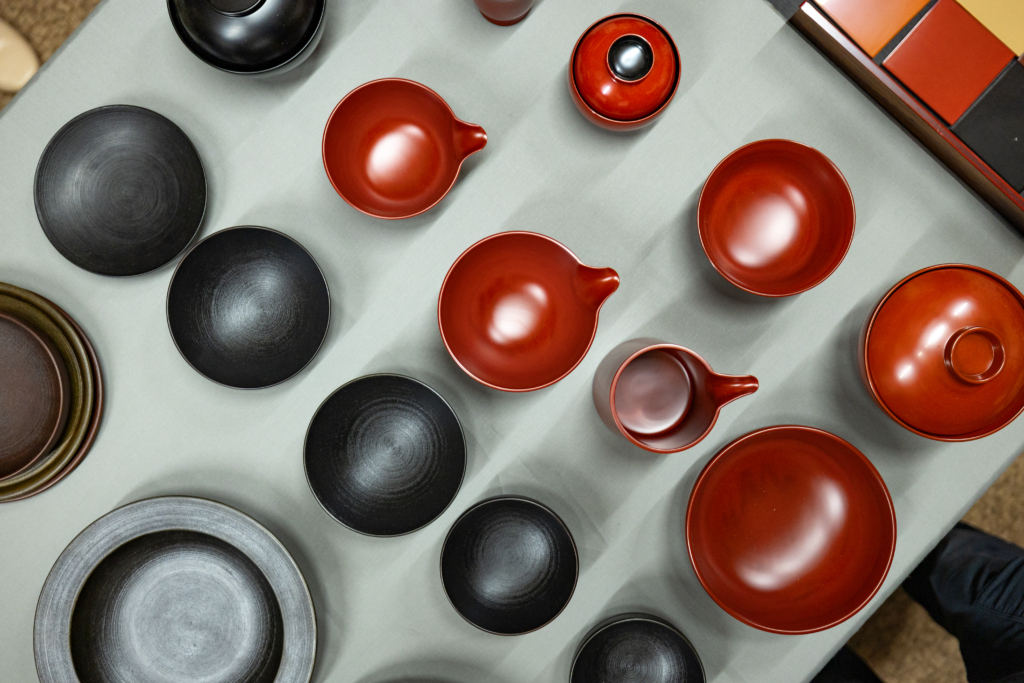
To Bring Comfort to People
Finally, Junko shared her thoughts:
“I want to make as many people as possible feel comfortable and enriched through the power of Wajima lacquerware. I believe that this desire will eventually contribute to making the country, and the world, a better place. This is the driving force behind our craftsmanship.”
Her words express a deep love for Wajima lacquerware and a strong belief that goes beyond simply making vessels. Wajima lacquerware has the power to enrich people’s hearts in daily life, offering healing and comfort. It is not just a tool, but a bridge connecting people, communities, and cultures.
“After experiencing the earthquake, I realized how much power a vessel can have in supporting people. It can inspire energy in someone or prompt a community to reflect on itself. I believe this is the potential of Wajima lacquerware.”
WAJIMA KIRIMOTO will continue to believe in this potential and move forward, step by step. While cherishing tradition, their challenge to propose new value in line with the changes of the times will undoubtedly further expand the power of Wajima lacquerware.
Junko Kirimoto
Originally from Osaka Prefecture, Junko Kirimoto moved to Wajima City in Ishikawa Prefecture after marriage, leaving behind city life. At WAJIMA KIRIMOTO, she is responsible for the overall operation of the workshop while also focusing on activities to promote the charm of lacquerware. In her daily work, she handles accounting and general affairs, while also exploring ideas to help people better understand the beauty of Wajima lacquerware.
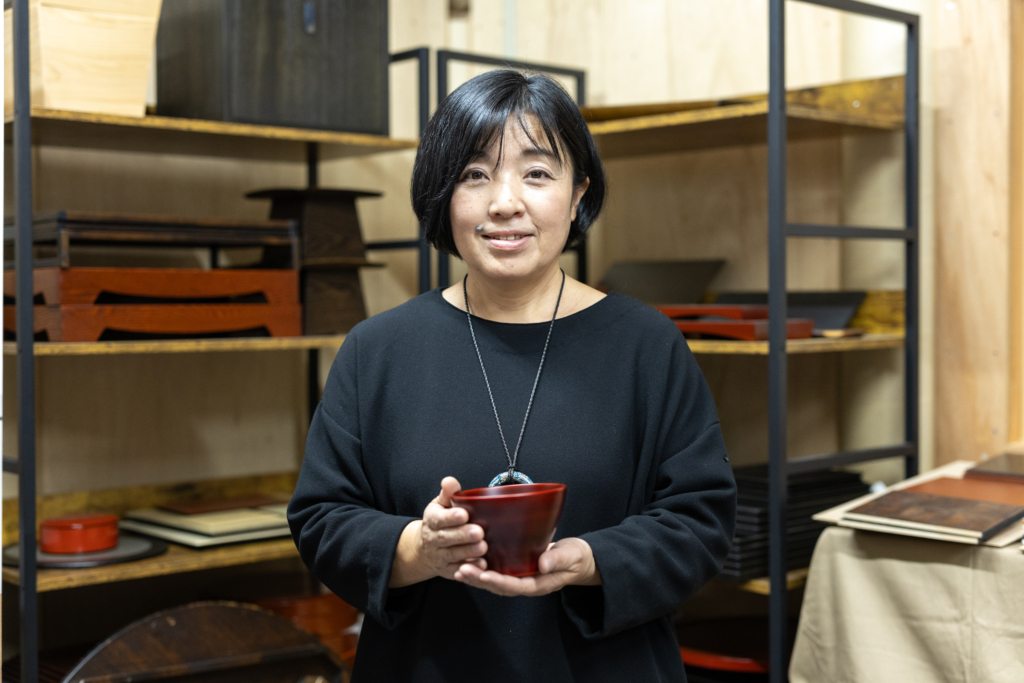
If you are interested in visiting Kirimoto and getting further into the world of Wajima-nuri, please see the following information
Kirimoto Workshop Tour Program
Highlights
・You can take a special tour of Kirimoto’s workshop.
・You will have a chance to meet Mr. Kirimoto and his craftsmen, who will talk about their passion for Wajima-nuri.
Information
Fee: From 5,000 yen per person
Participants: 1 to 6 people
Time required: about 1 hour
Included: Visit to Kirimoto workshop
Meeting: Kirimoto parking lot
Language: Japanese (English interpreter can be arranged upon request)
For reservation inquiries, please click here.